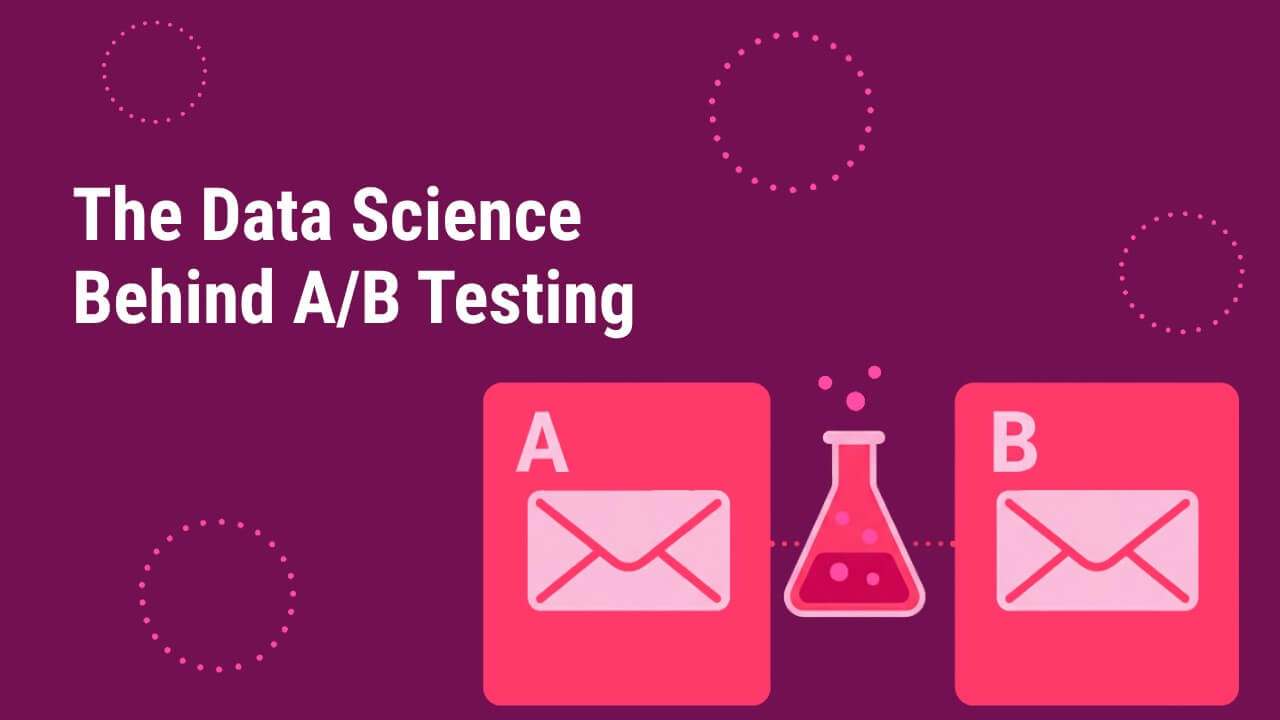Every marketer loves a “winner.” The winning subject line. The winning ad campaign creative. The winning landing page. But here’s the catch: sometimes what we call a winner is just random chance.
At Drumline, rigorous A/B testing is part of our DNA. Our Data Science team makes sure the Customer Relationship Management (CRM) team runs the experiments like true scientists. The result? Real lessons about what truly moves your audience – whether it’s emails, landing pages, ads, or even SMS campaigns.
Here’s how we do it.
The Drumline Framework for Smarter Email A/B Testing
1. Start with the KPI that Matters
Before any test runs, we define the primary KPI: the metric that matters most for that test. Choosing the right KPI ensures we measure the impact that truly matters and keeps our testing focused on meaningful results.
The key is choosing the right KPI for the right question. Here are some examples:
- Which subject line or sender name performed best? → look at open rate
- Which button color or image was most effective? → look at click rate
- Which offer or incentive drove the most leads? → look at lead gen rate
Match the KPI to the test, and you get a clear read on what actually worked.
Real World Testing Insight
In a recent A/B test comparing expiring messaging (limited-time offers) with evergreen messaging (ongoing offers), we found a statistically significant difference in lead capture rate, our primary KPI. That insight helped us optimize the campaign and maximize revenue for our client.
If we had focused only on click rate, we would have missed the story. The difference was tiny, 0.36% vs. 0.34%, and not statistically significant. But by paying attention to the right KPI, we uncovered a result that actually mattered.
Pro tip: Only use expiring messaging if the offer is truly expiring; false urgency can hurt trust and create legal issues.
2. Structure the Audience for Meaningful Results
A test can only tell you the truth if the audience is set up correctly. That means splitting your list in a way that ensures each version is fairly compared by running tests long enough to gather sufficient data, and keeping audiences consistent across multi-touch campaigns. Otherwise, you risk chasing random noise instead of uncovering what really works.
For one-off sends, we usually split the list 50/50. This maximizes the sample size and gives us the best shot at reaching statistical significance. For automated recurring emails, which usually go to smaller audiences throughout the year, we let the test run over several months. This gives us enough data to make confident decisions instead of guessing after just a few days.
When we set up multi-touch campaigns in tools like Salesforce Marketing Cloud Journey Builder, we can map out an initial email followed by a reminder (or even multiple touches). Journey Builder keeps test groups consistent, so Audience A always receives version A across every touchpoint, and Audience B always receives version B. This setup isolates the impact of the variable itself, instead of muddying results with random version switching.
Real World Testing Insight
In a recent layout test, we compared one version that put the key sales message front and center, while the other buried it lower in the email. By keeping the versions consistent across multiple touches, we could see clearly that the top-loaded version generated 60% more leads and significantly higher revenue.
3. Statistical Significance is the Goal, but Practical Value Counts too
We aim for 95% statistical confidence in every test, meaning there’s only a 5% chance your result is a fluke. That tells us the result is real, not just random chance.
But numbers alone don’t tell the whole story. We also look at practical significance. Even if a result doesn’t reach full statistical significance, a clear trend that aligns with other tests or shows meaningful business impact can still guide decisions.
Real World Testing Insight
One landing page test increased click-to-lead rates and total sales. While the results were not statistically significant, the consistent trend across other tests and the extra revenue from more leads made the change worthwhile.
4. Let the Data Lead: When Email A/B Testing Defies Expectations
Every A/B test starts with a hypothesis: an educated guess about what will resonate with your audience. But sometimes, the results prove us wrong, and that’s where the real learning happens. It’s important to approach each test with an open mind and without bias.
Real World Testing Insight
In a copy test aimed at a higher-income segment, we hypothesized that premium-focused copy would perform best. Instead, a family-focused, affordability-driven message outperformed it, generating the highest click rate. Assumptions can guide your ideas, but data always tells the true story.
5. Test For Progress, Not Perfection
Every marketer dreams of the perfect test with huge sample sizes, isolated variables, and airtight statistical results. But real-world testing rarely works that way.
The key is to test what you can, with the audience and timeline available, and pull out learnings you can use now. At times, a test may need to be re-run to get clearer results. At other times, the outcome shows little to no difference between options, meaning the real question becomes whether making the change is worthwhile.
Real World Testing Insight
We once tested the impact of adding an emoji to a CTA button. After running the test long enough to reach a robust sample size, the results were nearly identical: 0.28% vs. 0.29% click rate. Instead of forcing a “winner” by retesting endlessly, we treated this test as inconclusive, and learned something simple: for this audience, emoji CTAs just don’t move the needle – up or down. That insight saved us time and let us focus on new tests.
The Bottom Line: Make Every Test Count
A/B testing isn’t about a few lucky clicks or leads. The real benefit comes from insights that help you understand your customers, predict what they will respond to, and deliver experiences they value. Even tests that don’t produce huge wins teach you something, and every lesson makes your marketing smarter and more effective for your audience.
That is how testing goes from a “nice to have” to a driver of consistent business growth.

